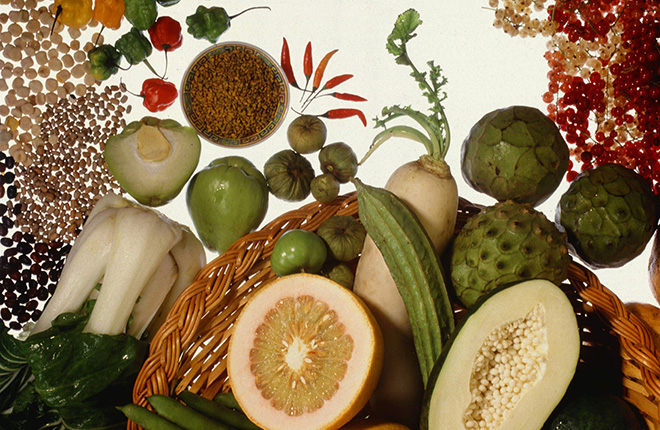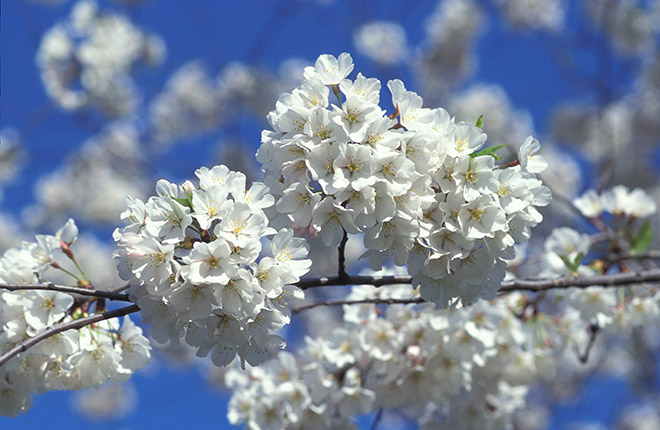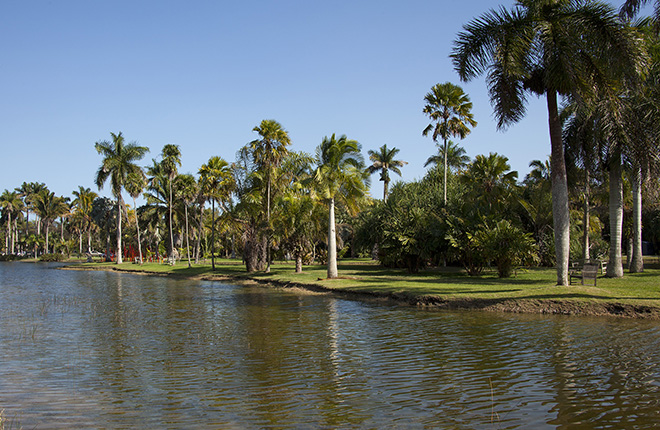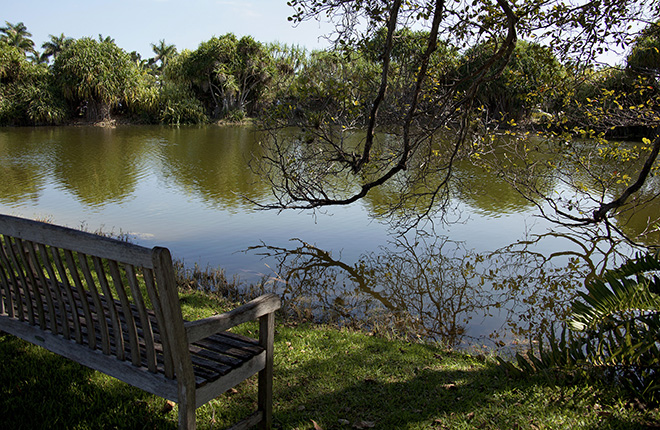Rekindled Interest in a USDA Trailblazer
Some recently discovered papers at the Agricultural Research Service’s Subtropical Horticulture Research Station (SHRS) in Miami, Florida, could rekindle interest in an ARS plant explorer whose life story reads like a novel.
David Fairchild, who died in 1954 at the age of 85, collected plants from all over the world; won the National Book Award for one of his four books; and introduced thousands of plants into the United States so they could be studied and bred to feed families, brighten up backyards, and withstand the insects, diseases, and droughts that are constant threats. He was also instrumental in introducing the Japanese cherry trees that blossom each spring around the Tidal Basin in Washington, D.C.
Fairchild’s papers still attract researchers studying the origins of invasive plants or plants that may combat invasives. There are leather-bound notebooks, faded black-and-white photographs, and handwritten notes.
Scientists now have some new materials to study. While reviewing old records as part of an effort to reorganize the SHRS library, ARS technician Mike Winterstein recently recovered several boxes belonging to Fairchild that, among other things, documented one of his expeditions to the Philippines. Also in the cache are his plant introduction books and reports, some dating back to the early 1900s.
 Agricultural explorer David Fairchild displays fruit of the Calypterocalyx palm. The photo was taken at Boeroe Island (East Indies) in 1940. |
“In searching the globe for useful and interesting ornamentals and crops, Dr. Fairchild’s mission was much the same as that of ARS researchers today: working to ensure that growers are able to provide a safe and abundant supply of the agricultural products we all want and need,” said the late Peter Teal, former research leader (recently deceased) of SHRS.
Fairchild organized the USDA's Office of Foreign Seed and Plant Introduction, served as its chairman for more than 20 years, and was instrumental in establishing gardens nationwide to screen plants with potential for improving U.S. diets, gardens, and landscapes. He is credited with introducing about 30,000 plant species and plant variations into the United States. His most famous book, “The World Was My Garden: Travels of a Plant Explorer,” won the National Book Award in 1938. His contributions to science also earned him the Public Welfare Award from the National Academy of Sciences. (More recent recipients include Bill and Melinda Gates, Carl Sagan, and Norman Borlaug.)
Fairchild went to Florida after a stint at the USDA Vegetable Plant Pathology Laboratory in Washington. The research station where Fairchild worked in Florida was closed in 1923 and was replaced by what is now the SHRS. But his imprint is still evident. His 11-acre estate near Miami is a popular tourist destination and home to some of the mango, avocado, and palm trees, along with other plants, that he brought back from overseas. Another Miami attraction, the Fairchild Tropical Botanic Garden, is where the bulk of his papers are kept.
Both sites continue to attract visitors, and the plants Fairchild introduced are still helping scientists address modern-day challenges, from coping with climate change to boosting yields, to feeding the expanding global population.—By Dennis O’Brien, Agricultural Research Service Information Staff.
"Rekindled Interest in a USDA Trailblazer" was published in the April 2015 issue of AgResearch Magazine.
Key Facts
- Records of early plant explorer recently discovered.
- The late David Fairchild collected plants worldwide.
- He introduced about 30,000 plants to the U.S.
- His photos and papers attract scientists around globe.
Full Story













